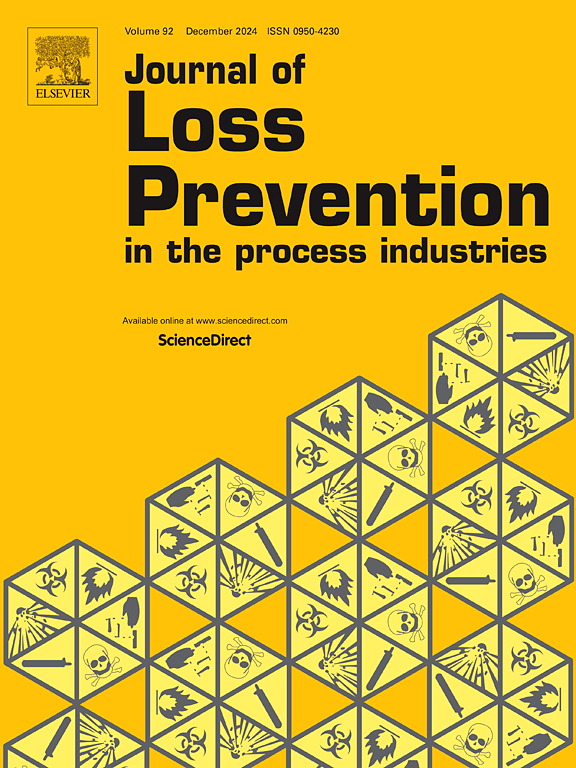Study on the occurrence path and prediction of unsafe behaviours of hazardous chemical storage personnel
IF 3.6
3区 工程技术
Q2 ENGINEERING, CHEMICAL
Journal of Loss Prevention in The Process Industries
Pub Date : 2025-04-15
DOI:10.1016/j.jlp.2025.105653
引用次数: 0
Abstract
The storage of hazardous chemicals is a high-risk area prone to accidents, which can result in severe environmental pollution, endanger personnel safety, and cause significant economic losses. By applying an improved HFACS model, tailored for hazardous chemical storage and combined with Bayesian methods, a more effective analysis of unsafe behaviour in personnel can be achieved. First, a model for analysing unsafe behaviour in hazardous chemical storage was developed, and 14 relevant factors were identified. Parameter learning was then conducted to preliminarily determine key nodes. Next, the mutual information matrix was calculated, and sensitivity analysis was performed to update the model. Path analysis was then employed to examine the impact of various factors on three types of unsafe behaviour: skill-based errors, decision errors, and violations. Finally, posterior probabilities were calculated to illustrate the unsafe behaviour analysis method. Violations are significantly influenced by the organisational climate, skill-based errors are more affected by the technical environment, and decision errors are primarily influenced by inadequate supervision and poor operational planning. In hazardous chemical storage working scenarios, attention should be focused on improving the technical environment to prevent skill-based errors, addressing inadequate supervision and operational planning to avoid decision errors, and improving the organisational climate to prevent violations. This study presents a methodology, applicable to the hazardous chemical storage industry, that predicts potential unsafe behaviour based on certain factors and provides insights into the causes of accidents that may not be clearly identified in accident analysis reports.
危险化学品贮存人员不安全行为发生路径及预测研究
危险化学品的储存是事故易发的高风险区域,会造成严重的环境污染,危及人员安全,造成重大的经济损失。通过应用为危险化学品储存量身定制的改进HFACS模型,并结合贝叶斯方法,可以实现对人员不安全行为的更有效分析。首先,建立了危险化学品储存不安全行为分析模型,确定了14个相关因素。然后进行参数学习,初步确定关键节点。其次,计算互信息矩阵,并进行敏感性分析,更新模型。然后采用路径分析来检查各种因素对三种不安全行为的影响:基于技能的错误,决策错误和违规行为。最后,计算后验概率来说明不安全行为分析方法。违规行为受到组织气候的显著影响,基于技能的错误更多地受到技术环境的影响,而决策错误主要受到监督不足和业务规划不良的影响。在危险化学品储存工作情况下,应注重改善技术环境,以防止技能错误,解决监督和业务规划不足的问题,以避免决策错误,并改善组织气氛,以防止违规行为。本研究提出了一种适用于危险化学品储存行业的方法,该方法基于某些因素预测潜在的不安全行为,并提供了对事故分析报告中可能无法明确确定的事故原因的见解。
本文章由计算机程序翻译,如有差异,请以英文原文为准。
求助全文
约1分钟内获得全文
求助全文
来源期刊
CiteScore
7.20
自引率
14.30%
发文量
226
审稿时长
52 days
期刊介绍:
The broad scope of the journal is process safety. Process safety is defined as the prevention and mitigation of process-related injuries and damage arising from process incidents involving fire, explosion and toxic release. Such undesired events occur in the process industries during the use, storage, manufacture, handling, and transportation of highly hazardous chemicals.

 求助内容:
求助内容: 应助结果提醒方式:
应助结果提醒方式:


